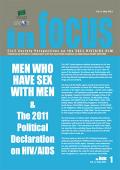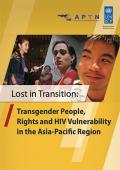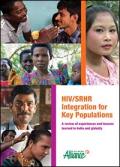What's New
Displaying results 3641 - 3650 of 4922

Resource | Presentations,
Presentation on Increasing South-South co-operation through the India-Africa partnership and the Global South at Regional Consultation and Planning Workshop “Use of TRIPS Flexibilities to Access Affordable ARVs in Asia” Bangkok 29-31 May 2012

Resource | Presentations,
Presentation on International Trade Rules and Access to Treatment (an Overview) at Regional Consultation and Planning Workshop “Use of TRIPS Flexibilities to Access Affordable ARVs in Asia” Bangkok 29-31 May 2012

Resource | Presentations,
Presentation on Introduction to Compulsory licences at Regional Consultation and Planning Workshop “Use of TRIPS Flexibilities to Access Affordable ARVs in Asia” Bangkok 29-31 May 2012

Resource | Presentations,
Presentation on Patent Oppositions and Strict Patentability Criteria: What it Means for Access to Treatment? at Regional Consultation and Planning Workshop “Use of TRIPS Flexibilities to Access Affordable ARVs in Asia” Bangkok 29-31 May 2012

Resource | Presentations,
Summary of country mapping exercise: Regional Consultation and Planning Workshop Use of TRIPS Flexibilities to Access Affordable ARVs in Asia. Bangkok, Thailand 29-31 May (2012)

Resource | Presentations,
Presentation on The Shifting Winds: What Future for Sustainable Treatment? at Regional Consultation and Planning Workshop “Use of TRIPS Flexibilities to Access Affordable ARVs in Asia” Bangkok 29-31 May 2012.

Resource | Presentations,
Presentation on The TRIPS Plus Enforcement Landscape at Regional Consultation and Planning Workshop “Use of TRIPS Flexibilities to Access Affordable ARVs in Asia” Bangkok 29-31 May 2012

Resource | Fact Sheets,
The 2011 United Nations Political Declaration on HIV and AIDS was adopted by the UN General Assembly at a High Level Meeting on AIDS in New York on 10 June. After 30 years of the epidemic, the silence was finally broken with the inclusion of men who have sex with men (MSM) as one of the key affected populations (along with people who use drugs and sex workers).
This issue looks at what the 2011 Political Declaration addresses specifically for MSM and the impact on their lives in Asia and the Pacific region. However, most statements are also applicable to transgender people who were purposefully removed from the list of key affected populations (KAPs). It highlights the need for more advocacy around their recognition as a separate population from MSM.

Resource | Publications,
This review examines existing literature on trans people’s human rights and HIV vulnerability across the Asia-Pacific region. For present purposes Asia-Pacific includes all those nations and territories on the continent of Asia (from the Mediterranean to the Pacific) and in Australasia and Oceania. The focus in this report is therefore mainly (though not exclusively) on lower income and middle income countries of the region. This is not to suggest that trans people in more affluent countries do not experience challenges. On the contrary, they often find themselves excluded from economic opportunities enjoyed by others and end up facing many of the same challenges of survival as do trans people in less developed economies.

Resource | Publications,
This report summarises the findings of a review commissioned by India HIV/AIDS Alliance of experiences and lessons from integrating HIV and sexual and reproductive health and rights (SRHR) in programmes for key populations.
The report outlines definitions and benefits of HIV/SRHR integration for key populations and presents some general lessons learned about good practice. It then addresses each of the selected key populations – describing issues to consider within integrated HIV/SRHR support, sharing key strategies and providing examples of integration in action.





